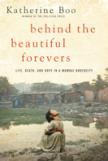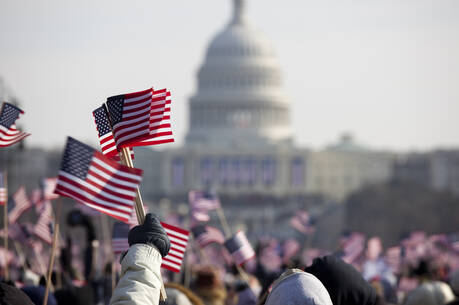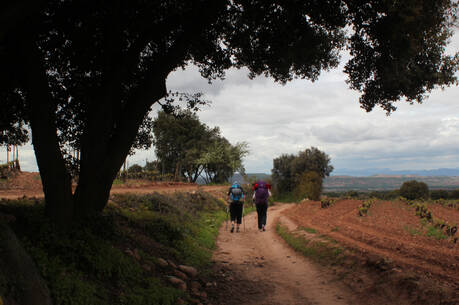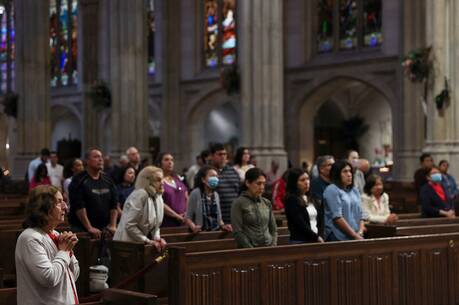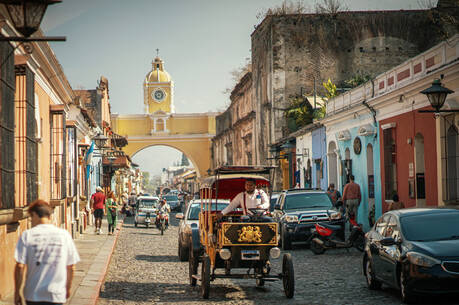The Other Side of Fantasy
Mahatma Gandhi considered separateness, the sin of the Self, the desire to “have the world say I,” as the basic transgression against community and interdependence.
In contrast to separateness, Hindus and Buddhists alike have long advocated attitudes that foster solidarity: the sacredness of all living creatures, the principals of nonviolence, openness of the heart in compassion. Gandhi would say that these attitudes gain clarity through suffering. In 1931, in his weekly journal, Young India, he wrote: “...the penetration of the heart comes from suffering. It opens up the inner understanding in man. Suffering is the badge of the human race....”
Suffering has surely elicited massive and generous response in moments of world crisis, but these exceptional moments are in notable contrast with ordinary modern life; we tend to flee from suffering and, consequently, experience a diminished sense of community and solidarity. Without a felt connection to the other, societies become indifferent or vengeful and out of touch with realities that penetrate the heart. Official claims promote liberty, justice and economic development, but what seems to be the motor of modern society is separateness, a virtue for the privileged and a weighty reality for the poor.
If our global economy proves more heartless than ever, what happens to the dreams of attaining a modest foothold in the world? This is the question that Katherine Boo began studying in poor communities in the United States. The investigation took on a new focus when the author married an Indian man and became acquainted with the complexities of an “infrastructure of opportunity” for the poorest citizens of developing India. If being poor in an affluent country like the United States poses significant challenges, what might be expected from a society with one third of the planet’s poverty and a quarter of its hunger?
Believing that better arguments and even better government policies could result from knowledge of ordinary lives, the author set out to learn basic details from a desperately poor community in India’s largest city, Mumbai.
She chose a community bordering the city’s international airport. In 1991 the site was an unclaimed bog, which Tamil laborers from southern India cleared and settled. Neighboring communities, never hospitable toward migrants, begrudgingly applauded the enormous effort by giving the settlement a deferential Tamil name: “Annawadi” (the land of older brothers).
But this name, with its implications of fraternity, has little more than sentimental meaning in a community where conditions make it “blisteringly hard to be good.” Life in an “undercity,” like the slums of Mumbai, blunts the “capacity for moral action,” making solidarity and fraternity almost impossible. Oftentimes the only route available for the poor is psychological separation from the drudgery of life and physical separation (anonymity or suicide) from corrupt civil authorities and neighbors envious of the slightest signs of success.
From November 2007 through March 2011, Katherine Boo carried out an investigation of the people of Annawadi. Recognizing a lack of non-fiction in modern day India, she decided to write an account with real people and real names. Drawing upon written notes, photographs, video and audiotapes and more than 3,000 public records, she presents the story of survival in a precarious and disease-ridden settlement, whose inhabitants scarcely make a living from the waste of the grand hotels nearby. It is a story of ingenuity and feeble advances, of envy and catastrophic failure, of cultural discrimination and petty rivalries, of government corruption and indifference that feed on the vulnerability of the poor.
The author had clear reasons for concentrating her investigation on one community: In an “undercity” like Annawadi, where economic possibilities are as close as the international airport and its five glamorous hotels, an astute investigator would want to observe who in the community actually advances and who does not.
The size of the community was another factor in the choice of Annawadi. Because of its manageable scale, the settlement made possible “door-to-door household surveys,” allowing problems of a personal nature to be distinguished from those commonly shared by all. The author’s success in accessing public records served to confirm what she heard in her interviews, and reveal how the poor and their daily sufferings are taken advantage of and then summarily erased from society’s consciousness.
At the beginning of Boo’s book the reader is introduced to a crisis in the family of Abdul, a teenage Muslim boy whose entire life has been spent “buying and selling to recyclers the things that richer people threw away.” The saga of Abdul and his family runs through the book’s narrative. Other figures emerge larger than life in a population of “undercitizens,” some outstanding for their ingenuity, ethical imagination and innate nobility, others consumed by the Self and controlled by envy or the need for power and economic gain.
The author offers no remedy for the hopelessness of Annawadi or for our global sin of the Self. Nonetheless, her narrative has a tone of hope in its clear preference for the “undercitizens” and its rejection of the powers that exploit them.
Behind the Beautiful Forevers is an invitation to look on the other side of well-being and fantasy, and identify with a world of stark reality where the majority of humanity lives. Gandhi would say that the very willingness to do so is redemptive, because in sharing suffering, we share our common condition, and the resultant solidarity is itself the catalyst for change.
This article also appeared in print, under the headline “The Other Side of Fantasy,” in the May 28, 2012, issue.


